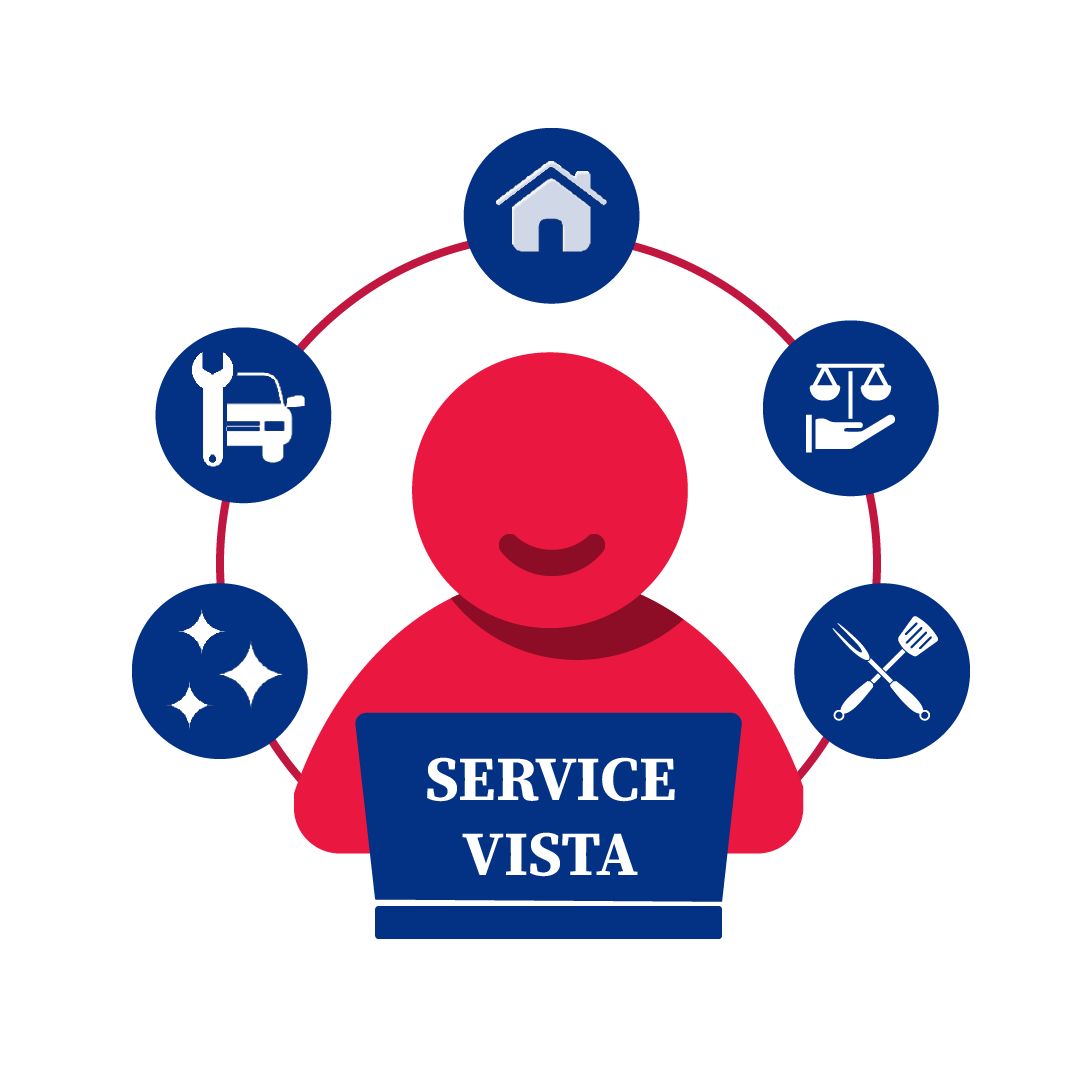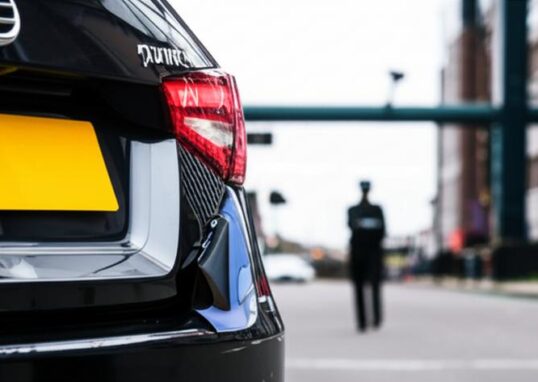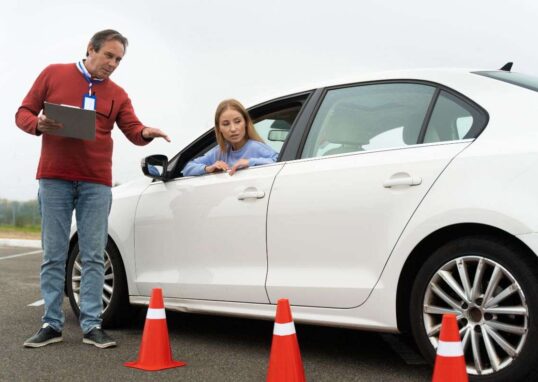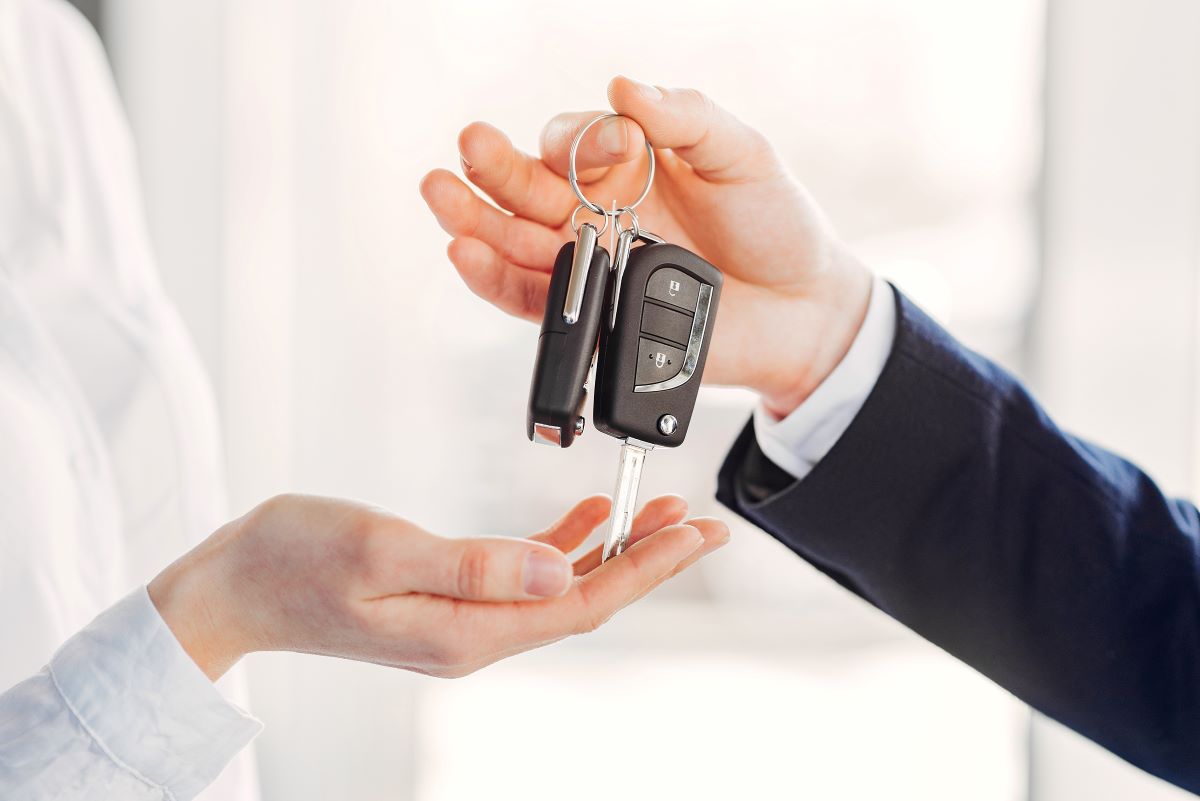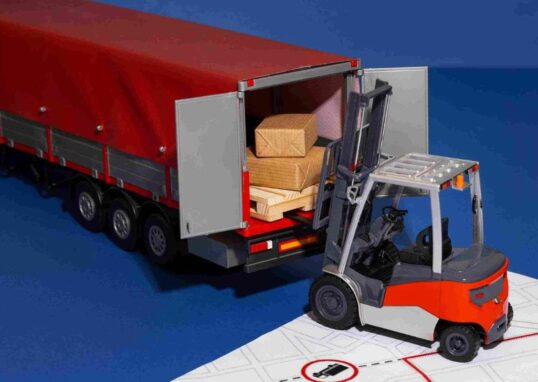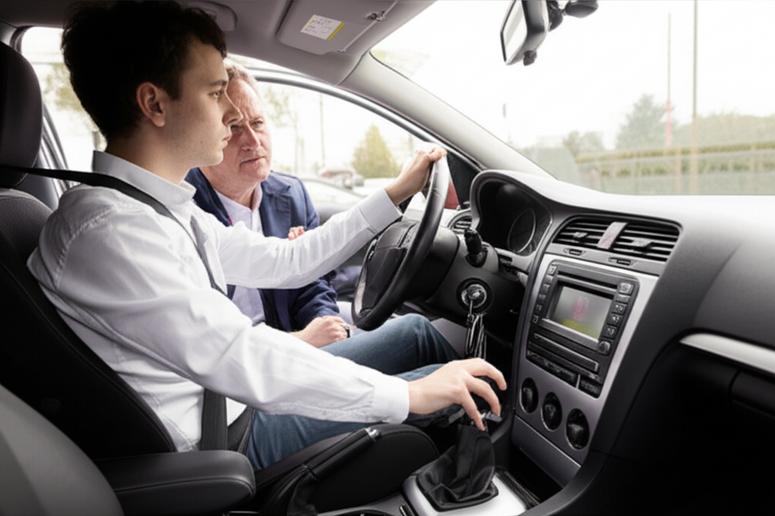
Learning to drive a manual transmission car in the UK offers a distinctive experience that continues to attract many aspiring drivers. While automatic cars are gaining popularity, mastering a stick shift provides a deeper understanding of vehicle control and opens up a world of driving opportunities. It’s a skill that many find empowering, offering a unique connection between the driver, the car, and the road. This comprehensive guide will walk you through everything you need to know about finding the best Driving Schools for Manual Transmission near you, ensuring you embark on your driving journey with confidence.
There’s something incredibly satisfying about smoothly shifting gears and feeling completely in tune with your vehicle. For many in the UK, the enduring appeal of manual driving lies in this heightened level of control and engagement. This article aims to be your definitive resource, helping you navigate the process of selecting the ideal school and instructor to help you master this valuable skill. We’ll delve into what makes a great manual driving school, what to expect from your lessons, and how to find the perfect fit for your learning style and location.
Why Learning to Drive a Manual Car is Essential in the UK
In the United Kingdom, choosing to learn to drive a manual car offers significant advantages that extend far beyond simply getting from point A to point B. It’s a decision that provides long-term flexibility, broader vehicle options, and a more engaging driving experience, truly making it an essential skill for many on UK roads.
The UK Driving Test and Full Licence Implications
One of the most compelling reasons to learn manual in the UK is directly related to the driving test and the type of licence you’ll receive. If you pass your practical driving test in a manual car, you are automatically granted a full driving licence that permits you to drive both manual and automatic vehicles. This provides a strategic advantage for your future driving opportunities, giving you complete flexibility. In contrast, if you pass your test in an automatic vehicle, your licence will restrict you to driving only automatics. This means if you ever decide you want to drive a manual car, you’d have to take and pass another driving test specifically in a manual vehicle. Therefore, investing in manual driving lessons UK now saves you potential hassle and expense down the line, ensuring you are fully qualified for any car on the road.
Wider Vehicle Choice and Resale Value
Despite the growing trend towards automatic transmissions, manual cars still hold a significant presence in the UK market. As of 2023, 65% of cars owned in England were manual, while 35% were automatic or semi-automatic, according to government statistics. However, it’s worth noting that new car registrations in 2024 saw a further decline in manual gearboxes, with only 22% of new cars sold being manual. Regardless, learning to drive a manual car significantly broadens your selection when it comes to purchasing or renting vehicles, both within the UK and internationally. Many popular models are still readily available with manual gearboxes, often at a lower purchase price and with potentially better fuel economy compared to their automatic counterparts. This wider choice can be a real benefit when looking for a car that fits your budget and lifestyle, and it can also positively impact the car’s resale value, as some buyers still prefer the traditional stick shift.
Enhanced Control, Engagement, and Driving Experience
For many enthusiasts, the joy of driving a manual car comes from the enhanced control and engagement it offers. When you’re driving a manual, you have direct control over gear selection, allowing you to optimize power delivery and responsiveness based on road conditions and your driving style. This active participation in the driving process creates a more engaging and immersive experience. You develop a deeper understanding of how the car’s engine, transmission, and wheels work together, which can make you a more perceptive and skilled driver overall. It’s a bit like playing a musical instrument – the more you practice, the more nuanced and enjoyable the experience becomes.
Developing Advanced Driving Skills and Confidence
Learning to operate a manual transmission requires a unique set of multi-tasking skills, including coordinating the clutch, gear stick, accelerator, and brake pedals, all while steering and observing the road. This intricate coordination challenges drivers to develop a higher level of awareness and precision. Mastering these skills builds immense confidence and competence behind the wheel. It instills a sense of accomplishment and prepares you for a wider range of driving scenarios, including navigating challenging terrains or varying traffic conditions. Ultimately, becoming proficient with a stick shift car can make you a more adaptable and confident driver in any situation.
Key Qualities of the Best Manual Driving Schools
When you’re ready to learn to drive manual car, selecting the right driving school is paramount to your success and safety. The best Driving Schools for Manual Transmission will possess several key qualities that ensure a high-quality learning experience, setting you up for confident and competent driving.
Qualified and Experienced Instructors (ADIs/PDIs)
The foundation of any excellent driving school is its instructors. It’s crucial to choose instructors who are either Approved Driving Instructors (ADIs) or Trainee Driving Instructors (PDIs) registered with the Driver and Vehicle Standards Agency (DVSA). These certifications ensure that the instructors have undergone rigorous training and assessments, meeting the high standards required to teach driving in the UK. When it comes to manual transmission, their specialized experience is invaluable. An experienced ADI or PDI will not only teach you the mechanics of clutch control and gear changes but also provide insightful tips for navigating real-world scenarios, ensuring you develop safe and efficient driving habits from the outset. They understand the common challenges new manual drivers face and can provide tailored guidance to help you overcome them.
Dedicated Dual-Control Manual Vehicles
Safety should always be a top priority when learning to drive. This is why dedicated dual-control manual vehicles are absolutely crucial for effective and safe learning. These vehicles are equipped with an additional set of pedals on the passenger side, allowing the instructor to take control of the clutch and brake if necessary. This provides a vital safety net, especially during initial lessons when you’re getting a feel for the clutch biting point and gear changes. Beyond safety, well-maintained and insured training vehicles are also essential. A reliable car ensures a consistent learning environment, allowing you to focus on developing your skills without worrying about mechanical issues. Always inquire about the type of vehicles a school uses and their maintenance schedule to ensure you’re learning in a safe and optimal environment.
Tailored Lesson Packages for All Skill Levels
The best manual driving schools understand that every student has unique needs and starting points. They offer a range of tailored lesson packages designed to cater to all skill levels, from absolute beginners to those looking for a refresher. For example, some schools, much like the Stick Shift Driving Academy, offer multi-level courses. Beginner-friendly courses focus on fundamental concepts like clutch control, engaging gears, and basic maneuvers, ensuring a solid foundation. Intermediate skill development lessons then build upon these basics, covering essential skills like upshifting, downshifting, hill starts, and navigating varied road conditions, similar to what you might find in a “most popular package.” For those seeking to refine their skills, tackle specific vehicle types (like higher horsepower cars), or needing a confidence boost after a break, advanced techniques and refresher lessons are available. This tiered approach ensures that regardless of your current driving ability, there’s a structured path to help you master the stick shift.
Emphasis on Real-World Driving Practice
While controlled environments like parking lots are great for initially grasping the basics of clutch control, the best schools go beyond this. They stress the importance of moving from parking lot lessons to extensive practice on actual city streets, rural roads, and even highways. This real-world driving practice is vital for preparing students for diverse driving scenarios they’ll encounter daily. Companies like Shift Bay Area and Primo Driving Schools emphasize this hands-on, practical approach, recognizing that true proficiency comes from navigating varied traffic conditions, roundabouts, junctions, and mastering lane changes on busier roads. Practicing in different environments helps build confidence and adaptability, ensuring you’re well-equipped for anything the road throws at you after you pass your UK driving test manual.
Strong Reputation and Positive Student Reviews
A driving school’s reputation speaks volumes about its quality and effectiveness. Before enrolling, it’s highly advisable to check online reviews on platforms like Google and Trustpilot, and to read student testimonials. These provide invaluable insights into a school’s teaching methods, instructor professionalism, and overall student satisfaction. Positive reviews often highlight excellent instruction, patience, and high pass rates, giving you a strong indication of what to expect. Furthermore, don’t underestimate the value of word-of-mouth recommendations. Ask friends, family members, or local community groups for their experiences and trusted referrals. A school with a consistently strong reputation and positive feedback from past students is generally a reliable choice for your manual driving lessons UK.
Clear Pricing and Transparent Lesson Structures
Before committing to a driving school, it’s essential to understand their pricing structure and what each lesson package includes. The best Driving Schools for Manual Transmission will have clear and transparent pricing, detailing hourly rates, package deals (like Nova Driving School’s 2-hour or 4-hour packages), and any potential discounts. Always inquire about what’s included in the price – for instance, whether it covers the use of the training vehicle, fuel, and insurance. Be wary of hidden fees or restrictive terms and conditions, such as strict cancellation policies that could cost you money if your plans change. A reputable school will be upfront about all costs, allowing you to budget effectively for your entire manual driving journey and avoid any unwelcome surprises.
Understanding Manual Driving Lesson Content and Progress
Embarking on manual driving lessons is an exciting journey of skill acquisition. Understanding the typical progression and content of these lessons can help set your expectations and ensure you make the most of your learning experience.
The Fundamentals: Clutch Control and Gear Engagement
Your initial manual driving lessons will focus heavily on the absolute fundamentals: clutch control and gear engagement. This is where you’ll learn about the “biting point” of the clutch – the crucial point where the engine’s power starts to connect with the wheels. You’ll practice smooth starts without stalling, gently releasing the clutch while applying just enough accelerator. You’ll also learn the basic gear changes, understanding the gearstick pattern and how to select first, second, and reverse gears. Mastering these foundational skills is paramount, as they form the basis for all other manual driving techniques. Expect your instructor to spend ample time on these initial steps, as patience and repetition are key to building muscle memory and confidence.
Mastering Upshifting and Downshifting
Once you’re comfortable with basic starts and stops, your lessons will progress to mastering upshifting and downshifting. Upshifting involves moving to a higher gear as your speed increases, while downshifting involves moving to a lower gear, typically when slowing down or needing more power for acceleration. You’ll learn the techniques for seamlessly changing gears, including coordinating your footwork on the clutch and accelerator, and understanding when to shift based on engine RPMs and road conditions. This includes effective techniques for engine braking – using the engine to help slow the car by downshifting. Smooth gear changes are a hallmark of a skilled manual driver and will contribute significantly to a comfortable and efficient driving experience.
Conquering Hill Starts and Complex Maneuvers
Hill starts can be a daunting prospect for new manual drivers, but your lessons will equip you with effective techniques to conquer them with ease. You’ll learn how to hold the car steady on an incline using a combination of the clutch, brake, and accelerator, and how to pull away smoothly without rolling backward. Beyond hill starts, you’ll also delve into managing the clutch for various low-speed movements and complex maneuvers, such as parallel parking, reversing around a corner, and three-point turns. These maneuvers require precise clutch control and slow, controlled movements. Your instructor will guide you through these practical skills, ensuring you can execute them safely and efficiently, which are vital for daily driving and your UK driving test manual.
Driving in Varied Traffic and Road Conditions
As your skills develop, your manual driving lessons will increasingly involve driving in varied traffic and road conditions. This includes navigating busy stop-and-go traffic, which can be challenging for manual drivers due to frequent clutch work. You’ll practice handling roundabouts, complex junctions, and gain experience on faster roads like motorways. This exposure to diverse environments is crucial for building adaptability and decision-making skills. Your instructor will provide guidance on anticipating traffic flow, managing distances, and making appropriate gear choices in dynamic situations, preparing you for the realities of driving on UK roads. The goal is to make you a confident and capable driver, regardless of the driving conditions.
Preparing for the UK Manual Driving Test
A significant portion of your lessons will be dedicated to preparing you for the practical elements of the UK manual driving test. This preparation goes beyond just operating the car; it encompasses all aspects of safe and independent driving. You’ll practice the specific maneuvers required in the test, such as parallel parking, bay parking, pulling up on the right, and reversing for two car lengths. Your instructor will also guide you through independent driving sections, where you follow directions from a sat nav or road signs, simulating real-world navigation. They will provide mock tests to gauge your readiness, identify any areas needing improvement, and ensure you are confident and composed when the actual test day arrives. This comprehensive preparation is key to passing your UK driving test manual and earning your full licence.
How to Find the Best Manual Driving Schools Near You in the UK
Finding the right driving school is a crucial step towards mastering the manual transmission. With so many options available, knowing where to look and what to ask can make all the difference in your learning journey.
Leveraging Online Search and Local Directories
The easiest place to start your search for Driving Schools for Manual Transmission is online. Use search engines like Google Maps with specific queries such as “manual driving lessons near me,” “stick shift driving schools UK,” or “learn manual car London” (if you’re in the capital). These searches will quickly bring up local options, often with reviews and contact details. Additionally, explore specialized driving school directories and comparison websites, which often list schools by region and allow you to filter by specific services like manual lessons. Websites such as the Official Gov.uk site for approved driving instructors can also be a valuable resource for finding qualified instructors in your area. This digital approach provides a broad overview of available schools and their initial offerings.
Seeking Local Recommendations and Referrals
While online searches are helpful, don’t underestimate the power of personal recommendations. Ask friends, family members, colleagues, or local community groups if they have any trusted recommendations for manual driving schools. People who have recently learned to drive a manual car or know someone who has can offer valuable first-hand insights into instructor quality, teaching methods, and overall experience. A personal referral often comes with a level of trust and can provide details that you might not find on a school’s website. This word-of-mouth approach can sometimes lead you to hidden gems or instructors who genuinely excel at teaching manual transmission.
Evaluating Driving School Websites and Offerings
Once you have a list of potential schools, take the time to scrutinize their websites. Look for detailed course descriptions that specifically mention manual transmission lessons. Check for instructor profiles, which often highlight their qualifications, experience, and teaching philosophy. Pay attention to the type of vehicles they use for training – ensure they are dual-control manual cars, as previously discussed. A well-organized and informative website indicates a professional establishment. Look for information on lesson duration, cancellation policies, and any prerequisites. The more transparent and detailed a school’s website, the better informed you’ll be before making contact.
Asking Key Questions Before Enrolling
Before you commit, compile a checklist of key questions to ask potential driving schools. This ensures you gather all the necessary information to make an informed decision. Here are some essential questions: “Are your instructors Approved Driving Instructors (ADIs) with specific experience in teaching manual transmission?” “What type of vehicles do you use for manual lessons, and are they dual-control?” “What is the typical duration of a lesson?” “Do you offer tailored lesson packages for beginners, or refresher courses?” “What are your cancellation policies?” “Can you provide information on your driving test pass rates for manual learners?” “Do you offer lessons in varied road conditions, not just parking lots?” “Are there any hidden fees not included in the advertised price?” Getting clear answers to these questions will help you compare schools effectively and choose the one that best suits your needs and learning style for learning the stick shift driving schools UK has to offer.
The Cost of Manual Driving Lessons in the UK: What to Expect
Understanding the financial aspect of learning to drive a manual car in the UK is important for budgeting and planning. While costs can vary, having a clear idea of what to expect will help you make informed decisions.
Average Hourly Rates for Manual Lessons
The cost of manual driving lessons in the UK typically ranges from £25 to £60 per hour, depending on various factors. According to recent data, the average hourly rate can be around £34 to £37, especially when booking lessons in bulk. This price range reflects the investment in a qualified instructor, the use of a dual-control vehicle, and comprehensive training. It’s important to remember that this is an average, and prices can fluctuate based on location and instructor experience. For example, lessons in major urban centers like London tend to be at the higher end of this scale, while those in more rural areas might be slightly less expensive. Always confirm the current hourly rate directly with the driving school you are considering.
Benefits of Booking Lesson Packages
Many Driving Schools for Manual Transmission offer the option to book lessons in packages, such as 10 or 20 hours. While the upfront cost of a package might seem higher, they almost always offer better value per hour than individual lessons. For instance, Nova Driving School offers a 4-hour package that provides a slight saving compared to two separate 2-hour lessons. These packages are designed to encourage consistent learning and commitment, and they often come with a discounted rate, making the overall cost more economical. If you’re serious about learning to drive a manual car, booking a block of lessons is generally the most cost-effective approach and ensures you have a consistent schedule with your instructor, aiding faster progress.
Factors Influencing Lesson Costs
Several factors can influence the overall cost of your manual driving lessons. Location plays a significant role; as mentioned, lessons in bustling cities will typically be more expensive due to higher operating costs for driving schools. The experience and qualifications of your instructor can also impact the price, with highly experienced ADIs often charging a bit more for their expertise. The type of vehicle used for training might also subtly affect costs, though this is usually less of a differentiator than location or instructor experience. Furthermore, some schools might offer premium services or specialized courses that come with a higher price tag. It’s always a good idea to compare different schools and their offerings to find a balance between cost and quality that suits your needs.
Budgeting for the Full Manual Driving Journey
When budgeting for your manual driving journey, it’s essential to consider the total cost, not just the hourly rate. The Driver and Vehicle Standards Agency (DVSA) recommends around 45 hours of professional lessons to become a safe and competent driver. Based on the average hourly rate, this could mean a total lesson cost ranging from £1,125 to £2,700. In addition to lessons, you’ll need to budget for the theory test fee (currently £23) and the practical driving test fee (currently £62 on weekdays, £75 on evenings/weekends/bank holidays). You might also consider potential refresher lessons if you take a break from learning or want to fine-tune specific skills before your test. Some learners also opt for an intensive course, which bundles many hours into a shorter period, though this usually comes with a higher overall price. Planning for these total costs will help you manage your finances effectively throughout your learning process.
Conclusion: Drive with Confidence – The Manual Advantage
Learning to drive a manual transmission vehicle in the UK is more than just acquiring a skill; it’s about unlocking a deeper connection with your car and gaining invaluable driving freedom. We’ve explored the myriad benefits, from securing a full licence that covers both manual and automatic vehicles to enjoying a wider choice of cars and a more engaging driving experience. The enhanced control and comprehensive skill development you achieve through mastering a stick shift will undoubtedly make you a more confident and adaptable driver on any road.
Choosing the right Driving Schools for Manual Transmission is crucial for a successful learning journey. By focusing on schools with qualified instructors, dedicated dual-control vehicles, tailored lesson packages, and an emphasis on real-world practice, you set yourself up for success. Remember to leverage online resources, seek local recommendations, and ask the right questions to ensure you select a school that aligns with your learning style and goals. Mastering a manual car is a rewarding achievement, providing a sense of accomplishment and unparalleled control behind the wheel. So, take the leap, embrace the challenge, and embark on your path to driving with the manual advantage.
Ready to get started? Begin your journey by researching manual driving schools in your local area using the tips provided in this guide. Don’t hesitate to reach out to schools and ask questions to find the perfect fit for you. We’d love to hear about your experiences or any questions you have about learning to drive manual in the comments section below. Additionally, consider exploring our related articles on preparing for the theory test or choosing your first manual car to further enhance your driving knowledge.
